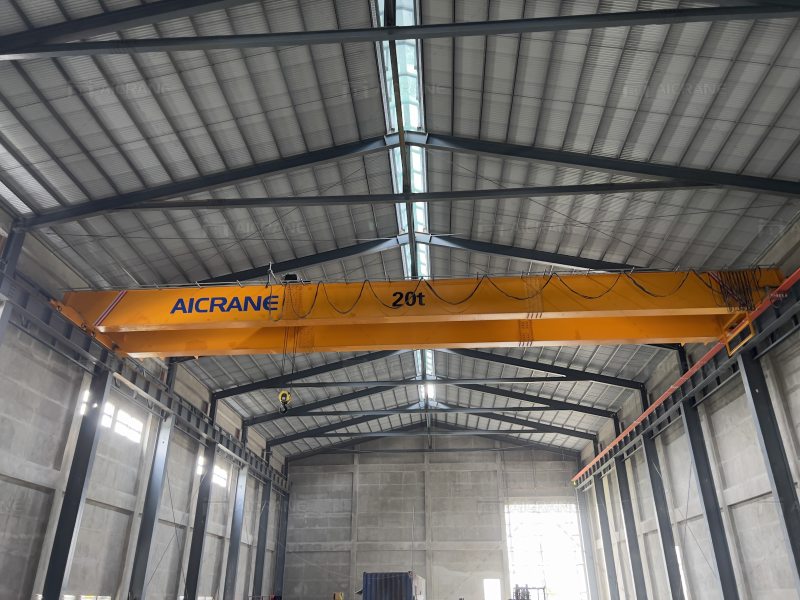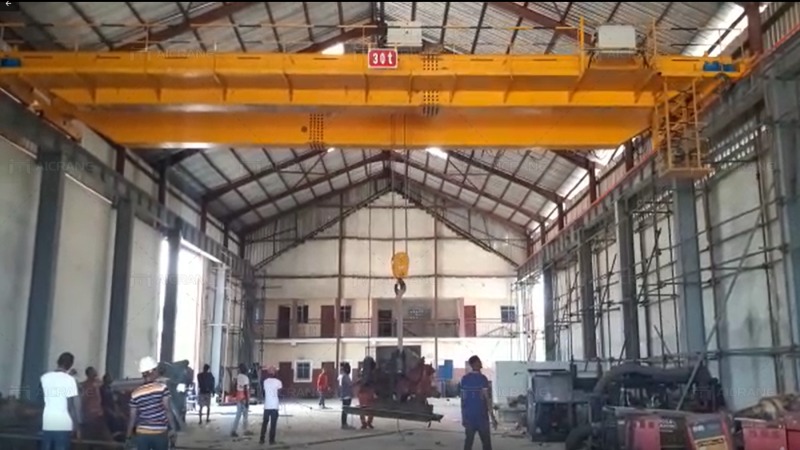The steel industry, with its heavy-duty requirements and complex operational demands, relies on advanced material handling solutions to ensure efficient and safe production. Among these solutions, double girder overhead traveling (DGOT) cranes play a pivotal role. Over the years, technological advancements in these cranes have brought significant benefits to the steel industry, allowing for enhanced safety, precision, and productivity.
This article delves into some of the key technological breakthroughs in double girder overhead traveling cranes that are transforming the steel industry.

Automation and Smart Control Systems
One of the most significant developments in DGOT cranes is the integration of automation and smart control systems. Automation has drastically improved crane operation efficiency, enabling precise control and reducing the need for manual intervention. These smart systems are often equipped with sensors and software algorithms that allow for:
- Precise Load Handling: Automated cranes are capable of detecting load weight and adjusting their speed and positioning for safe handling. This is especially critical in steel manufacturing, where loads can be irregular in shape and size.
- Optimized Workflow: Smart control systems can be programmed to follow predefined paths, reducing idle time and increasing the crane’s overall throughput. These systems also enable multi-tasking, with the double overhead crane handling multiple operations simultaneously, such as moving and positioning loads while another process, like welding or casting, takes place.
- Reduced Operator Fatigue: Automation eliminates many repetitive manual tasks, reducing operator fatigue and the risk of human error, especially during long shifts or operations in hazardous environments like steel plants.
IoT Integration and Real-Time Monitoring
The Internet of Things (IoT) has enabled DGOT cranes to become part of the broader smart factory ecosystem. IoT sensors placed on cranes can gather and transmit real-time data about the crane’s operations, load conditions, and overall system health. This data can then be used for:
- Predictive Maintenance: By continuously monitoring key parameters such as motor temperature, load cycles, and vibration levels, IoT-enabled cranes can predict when components are likely to fail. This reduces the risk of unexpected breakdowns and costly downtime, ensuring smooth and continuous operation in the steel plant.
- Operational Efficiency: Data analytics derived from IoT devices can provide insights into crane utilization rates, load handling patterns, and energy consumption. These insights allow plant managers to optimize overhead crane operation schedules and reduce energy wastage.
- Remote Monitoring: Supervisors can monitor crane activity remotely via IoT dashboards, ensuring compliance with safety protocols and optimizing operational efficiency even when they are off-site.

Advanced Safety Features
Given the high-risk environment of steel production, safety is paramount. Technological advancements in DGOT cranes have brought about several safety improvements that are critical in preventing accidents and ensuring the well-being of personnel.
- Anti-Sway Technology: One of the key challenges in crane operation is the swaying of loads during movement, which can lead to accidents and damage. Advanced DGOT cranes now feature anti-sway technology, which uses sensors and algorithms to counteract the swinging motion of suspended loads, allowing for smoother and safer movement.
- Collision Avoidance Systems: Many modern cranes are equipped with radar or laser-based collision detection systems that prevent accidental collisions with other equipment or structural elements in the plant. These systems provide real-time alerts and automatically stop crane movement when a potential hazard is detected.
- Safety Zones and Restricted Areas: With the use of geofencing technology, cranes can be programmed to avoid specific zones within the plant where human workers are operating. This reduces the risk of accidents and ensures that cranes only move within designated areas.
Energy Efficiency and Eco-Friendly Designs
In recent years, the focus on sustainability has driven the steel industry to adopt more energy-efficient and environmentally friendly technologies. DGOT cranes have followed this trend by incorporating features that reduce energy consumption and minimize their environmental footprint.
- Regenerative Drives: Modern DGOT cranes use regenerative drive technology that recaptures energy during the crane’s braking process. This energy is then fed back into the system, reducing overall power consumption and making crane operations more energy-efficient.
- Energy Monitoring Systems: IoT-enabled cranes can also monitor their energy usage in real-time. Plant managers can use this data to optimize crane usage patterns, scheduling tasks during off-peak hours to reduce energy costs.
- Lightweight Materials: Advances in materials science have allowed for the construction of crane components using lighter but stronger materials, reducing the overall weight of the crane while maintaining or even improving load capacity. Lighter cranes require less energy to operate, further enhancing energy efficiency. Aicrane has been in crane industry for many years and has much experience in offering reliable crane solutions to suit different needs, if you want to know more details about overhead cranes, you can feel free to contact Aicrane team for more information.
Customization and Adaptability
Another breakthrough in DGOT crane technology is the increased level of customization and adaptability. Steel plants often have unique layouts, load-handling requirements, and production processes. Modern DGOT cranes can be tailored to meet these specific needs.
- Modular Designs: Cranes with modular designs allow for easier assembly, disassembly, and reconfiguration. This is particularly useful in steel plants that may undergo frequent production line changes or expansions.
- Industry-Specific Attachments: Advanced DGOT cranes can be equipped with specialized attachments such as magnets, tongs, or clamps for handling different types of steel products, from billets to coils. These attachments are designed to handle loads securely and efficiently, reducing the risk of damage to the product and improving overall productivity.
- Integration with Production Lines: DGOT cranes can now be integrated into the plant’s automated production lines, synchronizing with other machinery and conveyors. This seamless integration improves workflow, reduces bottlenecks, and ensures a more streamlined production process.
Conclusion
Technological advancements in double girder overhead traveling cranes have had a profound impact on the steel industry. From automation and IoT integration to safety improvements and energy efficiency, these cranes have evolved to meet the increasingly complex demands of modern steel production. As the industry continues to grow and innovate, DGOT cranes will remain a cornerstone of material handling, driving efficiency, productivity, and safety in steel manufacturing operations.
By embracing these technological breakthroughs, steel plants can enhance their operational capabilities, reduce costs, and improve safety standards, positioning themselves for long-term success in a competitive global market.
